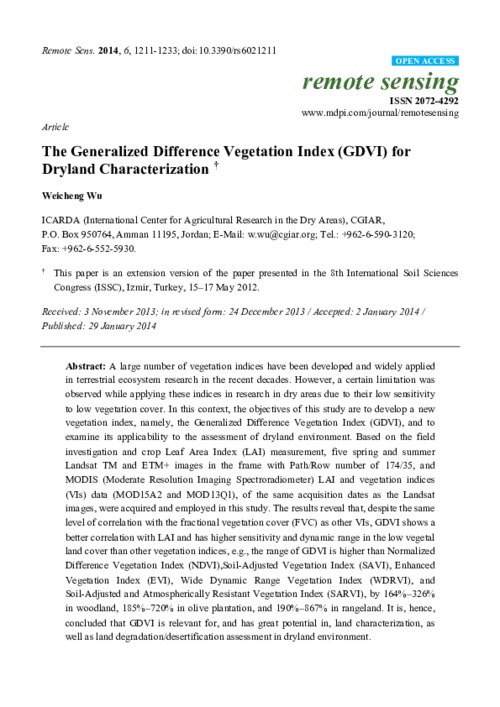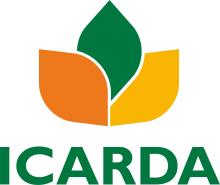Resource information
A large number of vegetation indices have been developed and widely applied
in terrestrial ecosystem research in the recent decades. However, a certain limitation was
observed while applying these indices in research in dry areas due to their low sensitivity
to low vegetation cover. In this context, the objectives of this study are to develop a new
vegetation index, namely, the Generalized Difference Vegetation Index (GDVI), and to
examine its applicability to the assessment of dryland environment. Based on the field
investigation and crop Leaf Area Index (LAI) measurement, five spring and summer
Landsat TM and ETM+ images in the frame with Path/Row number of 174/35, and
MODIS (Moderate Resolution Imaging Spectroradiometer) LAI and vegetation indices
(VIs) data (MOD15A2 and MOD13Q1), of the same acquisition dates as the Landsat
images, were acquired and employed in this study. The results reveal that, despite the same
level of correlation with the fractional vegetation cover (FVC) as other VIs, GDVI shows a
better correlation with LAI and has higher sensitivity and dynamic range in the low vegetal
land cover than other vegetation indices, e.g., the range of GDVI is higher than Normalized
Difference Vegetation Index (NDVI),Soil-Adjusted Vegetation Index (SAVI), Enhanced
Vegetation Index (EVI), Wide Dynamic Range Vegetation Index (WDRVI), and
Soil-Adjusted and Atmospherically Resistant Vegetation Index (SARVI), by 164%–326%
in woodland, 185%–720% in olive plantation, and 190%–867% in rangeland. It is, hence,
concluded that GDVI is relevant for, and has great potential in, land characterization, as
well as land degradation/desertification assessment in dryland environment.



